AMD Ryzen 5 3600 Review: Why Is This Amazon's Best Selling CPU?
by Dr. Ian Cutress on May 18, 2020 9:00 AM ESTTurbo, Power, and Latency
Turbo
As part of our usual test suite, we run a set of code designed to measure the time taken for the processor to ramp up in frequency. Recently both AMD and Intel are promoting features new to their processors about how quickly they can go from an active idle state into a turbo state – where previously we were talking about significant fractions of a second, we are now down to milliseconds or individual frames. Managing how quickly the processor fires up to a turbo frequency is also down to the silicon design, with sufficient frequency domains needing to be initialized up without causing any localised voltage or power issues. Part of this is also down to the OEM implantation of how the system responds to requests for high performance.
Our Ryzen 5 3600 jumped up from a 2.2 GHz high-performance idle all the way to 4.2 GHz in 16 milliseconds, which coincides exactly with a single frame on a 60 Hz display. This is right about where machines need to be in order to remain effective for a good user experience, assuming the rest of the system is up to scratch.
Power
With the Ryzen 5 3600, AMD lists the official TDP of the processor as 65 W. AMD also runs a feature called Package Power Tracking, or PPT, which allows the processor to turbo where possible to a new power value – for 65 W processors that new value is 88 W. This takes into account the power delivery capabilities of the motherboard, as well as the thermal environment. The processor can then manage exactly what frequency to give to the system in 25 MHz increments.
As part of my new test suite, we have a CPU power wrapper across several benchmarks to see the power response for a variety of different workloads.
For an AVX workload, y-Cruncher is somewhat periodic in its power use due to the way the calculation runs, but we see an almost constant 90 W peak power consumption through the whole test. The all-core turbo frequency here was in the 3875-3925 MHz range.
Our 3DPMavx test implements the highest version of AVX it can, for a series of six 10 second on, 10 second off tests, which then repeats. In this case we don’t see the processor going above 75 W in the whole process.
Photoscan is our more ‘regular’ test here, comprising of four stages each changing between single thread, multithread, and variable thread. We see peaks here up to 80 W, but the big variable threaded scenario bounces more around the 60 W mark for over 1000 seconds.
On the per-core power side, using our ray tracing power load, we see a small range of peak power values
When one thread is active, it sits at 12.8 W, but as we ramp up the cores, we get to 11.2 W per core. The non-core part of the processor, such as the IO chip, the DRAM channels and the PCIe lanes, even at idle still consume around 12-18 W in the system.
Latency
Our latency test is a simple core-to-core ping test, to detect any irregularities in the core design.
The results here are as expected.
- 7.5 nanoseconds for threads within a core
- 34 nanoseconds for cores within a CCX
- 87-91 nanoseconds between cores in different CCXes


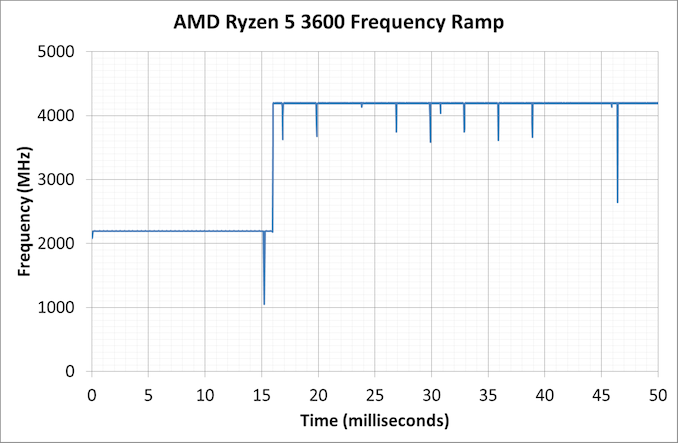
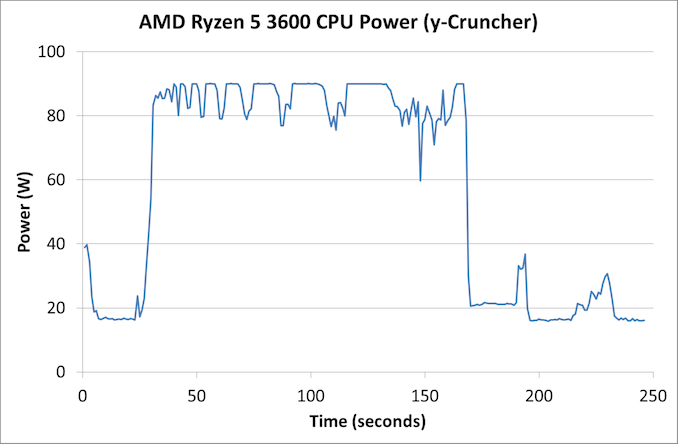
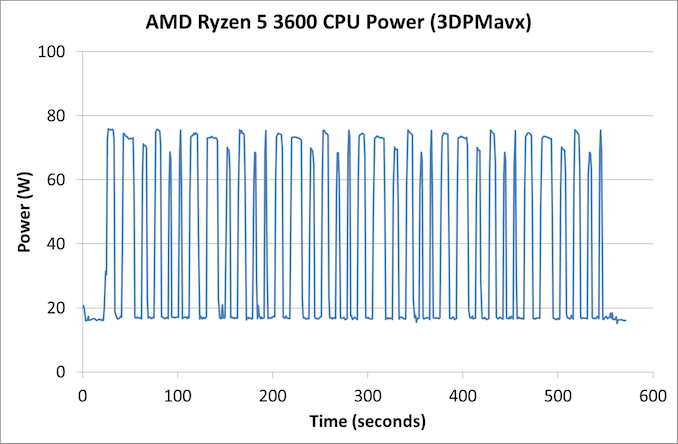
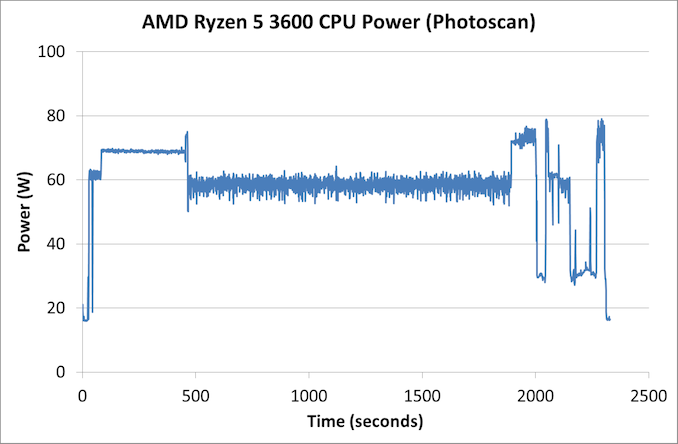
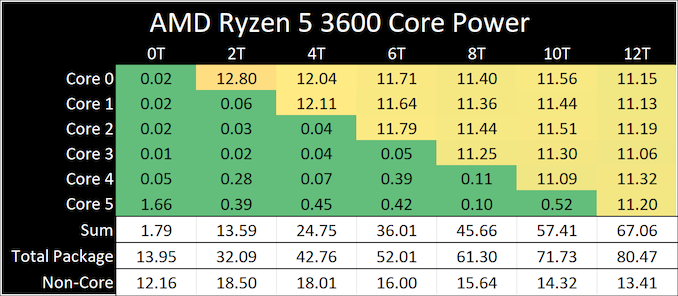
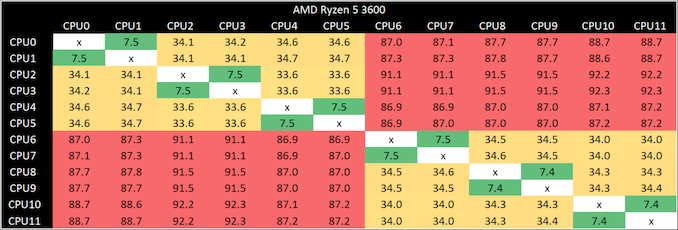








114 Comments
View All Comments
justareader - Friday, May 22, 2020 - link
They make plenty of money and they are paid well. Otherwise they would not be able to afford the fancy cars and the dinner parties. I have found that all writers on the internet are rich and have the best of everything. I want to one day be able to write for internet and get rich too.Kaihekoa - Monday, May 18, 2020 - link
I recommend gamers nexus for this kind of data and game-specific benches. Anandtech is outdated in many regards.Alistair - Monday, May 18, 2020 - link
Gamers Nexus is often not up to date either, which is the most important consideration in the context of his comment. Check Hardware Unboxed on Youtube, or Techspot for the latest info, and the most games tested.Pewzor - Monday, May 18, 2020 - link
Yep GN uses very old games. Even GTA V with a broken engine, and usually quite favor Intel and Nvidia, he used it since the game come out until today. Some turn based strategy game that I don't know anyone plays and so on.HideOut - Monday, May 18, 2020 - link
I honestly cant watch gamers nexus. He puts me to sleep with his non stop charts...jrbales@outlook.com - Tuesday, May 19, 2020 - link
I like the videos except they go on way too long, which is mainly due to all the charts. Would be better if he cut the videos by 10 minutes and create a webpage with the charts for those wanting a more in-depth review.0ldman79 - Wednesday, June 24, 2020 - link
They have a website.It has those charts.
You know you can grab the progress slider and fast forward, right?
flyingpants265 - Tuesday, May 19, 2020 - link
Jesus... Stay in school, kids.Spunjji - Tuesday, May 19, 2020 - link
Amazing how many people are prepared to tell on their own lack of attention span.mikato - Sunday, May 24, 2020 - link
Haha yeah what I was thinking was that I will sometimes skim through whole articles (especially when repeated content) just to see the charts since they are the meat of the content here and show results of the work I’m not going to do myself. And for that person the charts put them to sleep. I’m curious what do they watch Gamers Nexus for then? Entertainment aspects I guess but odd choice.